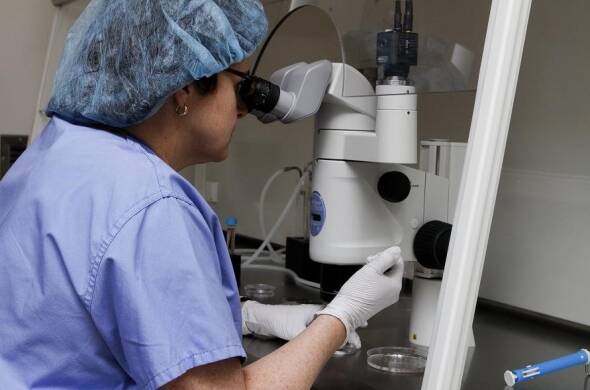Throughout the history of in vitro fertilization (IVF), reproductive specialists have tried to recreate the environment inside the body as closely as possible. With the introduction of a new generation of incubators, we are one step closer to achieving this goal. This state-of-the-art technology involves using a low-oxygen incubator until the embryo is transferred. This approach has been shown to enhance potential for a live birth. RMA has added low-oxygen incubators to its state-of-the-art laboratory.
The traditional approach
Much has been written about the damage that oxygen free radicals do to cells. It’s true as we age, and true at the very beginning of life. Ordinary room air is about 21 percent oxygen (O2). The rest is mostly nitrogen (N2) which is inert- that is, it has no effect on cells. In contrast, the oxygen concentration in the uterus is much lower. Traditional incubators add 5-6 percent carbon dioxide (CO2) to room air, which reduces the oxygen concentration slightly.
An ounce of prevention
It makes more sense to reduce oxygen exposure from the outset. Low oxygen incubators maintain the O2 concentration at about 5 percent- closer to the same O2 concentration in the uterus.
Intuitively, this proactive approach makes more sense, but initial comparison studies did not demonstrate an improvement to observed embryo quality. However, more recent studies which look at different endpoints such as implantation and live births show a distinct advantage.
Low O2 – high expectations
The low O2 incubation seems to make the greatest difference when it is used to culture the embryo for five or six days, from egg retrieval to embryo transfer, instead of culturing in a traditional CO2 incubator until day three. The additional time in the low O2 environment results in better quality blastocyst (advanced embryo) development, as well as more embryos developing to the blastocyst stage, implanting, and resulting in live births. One study found that every seven patients treated with the low O2 incubator resulted in an additional live birth.
RMA’s commitment to the best embryonic environment through low O2 incubation means that we can offer this proactive approach throughout the entire growth period, enhancing the potential for positive outcomes for all of our patients.
By Jeanne Walters, Embryology Lab Director
